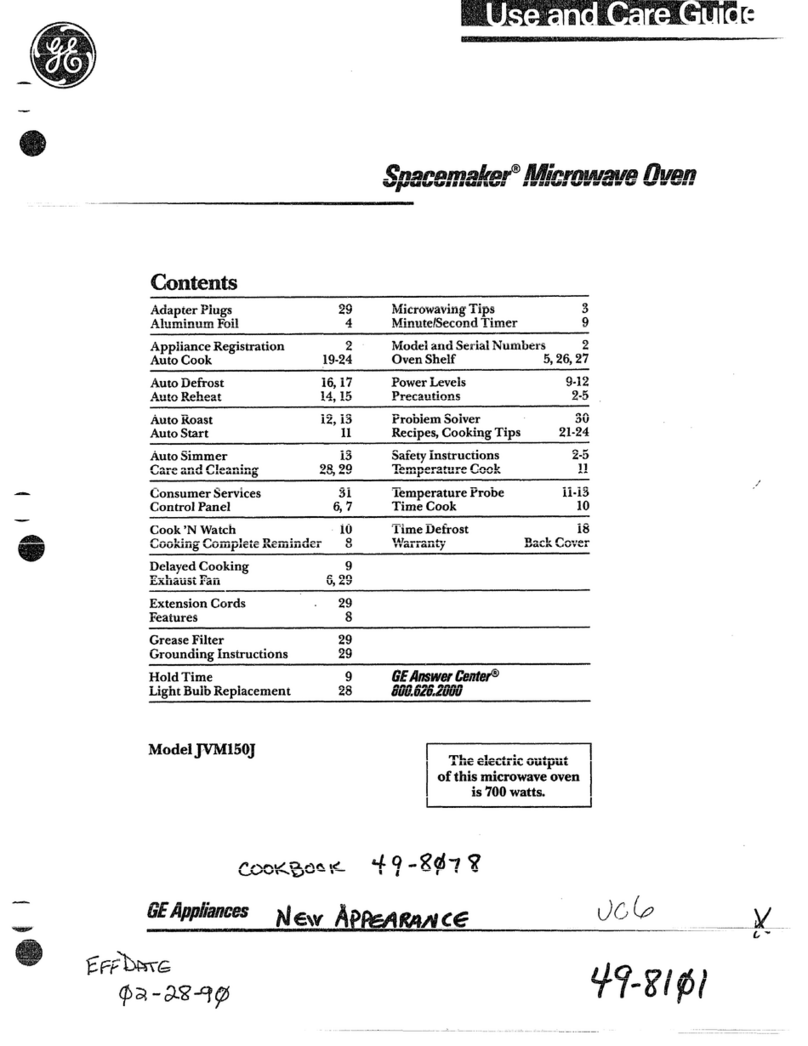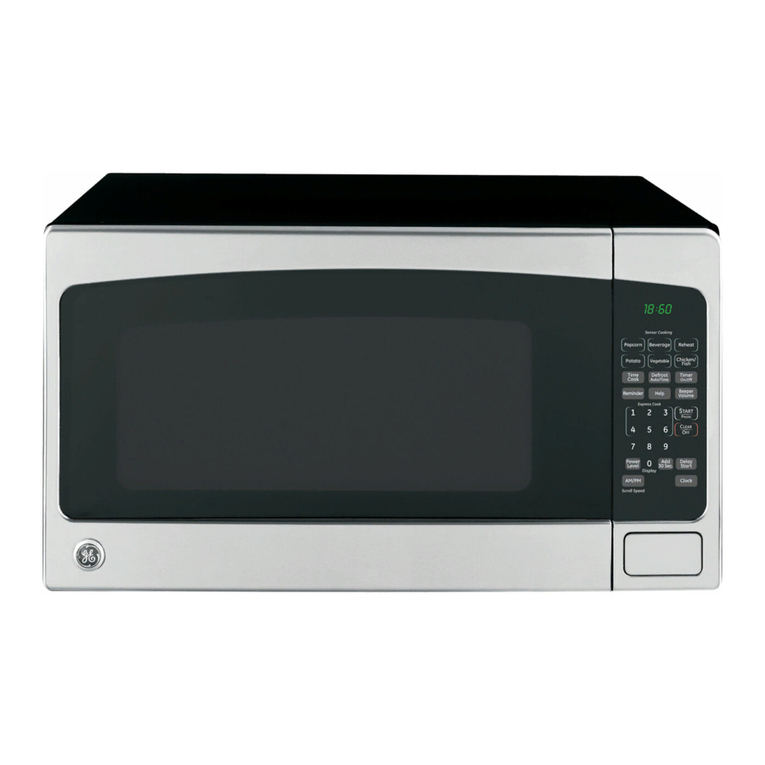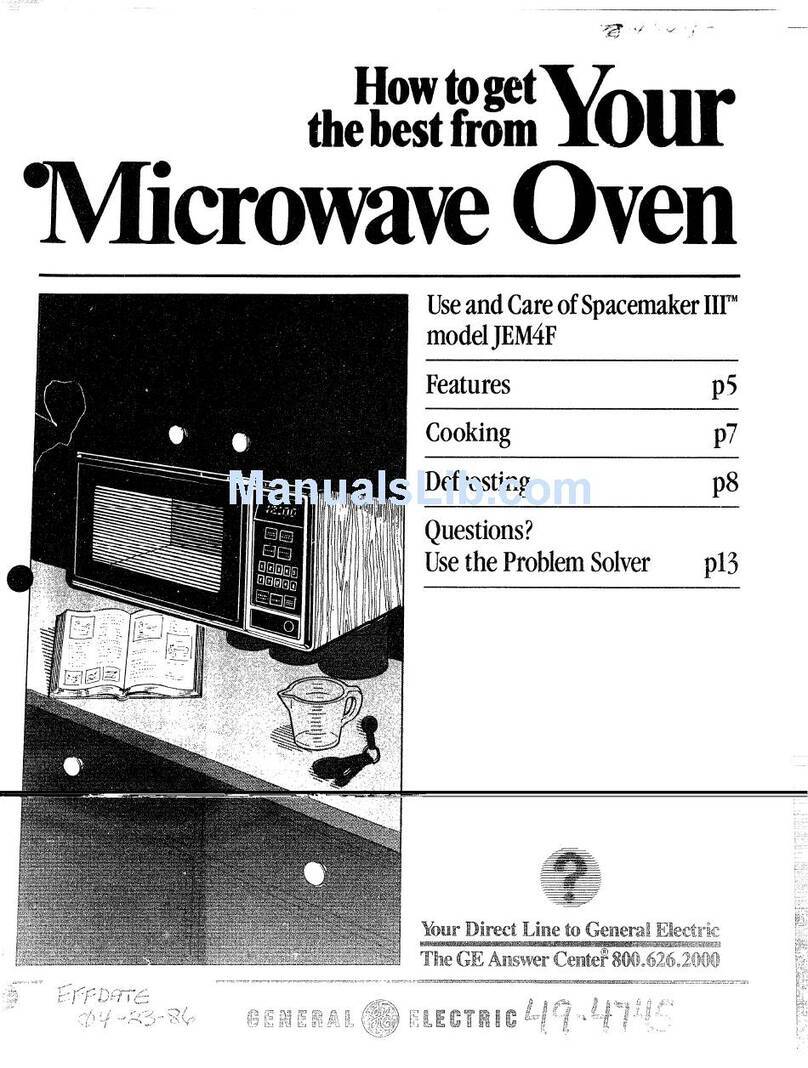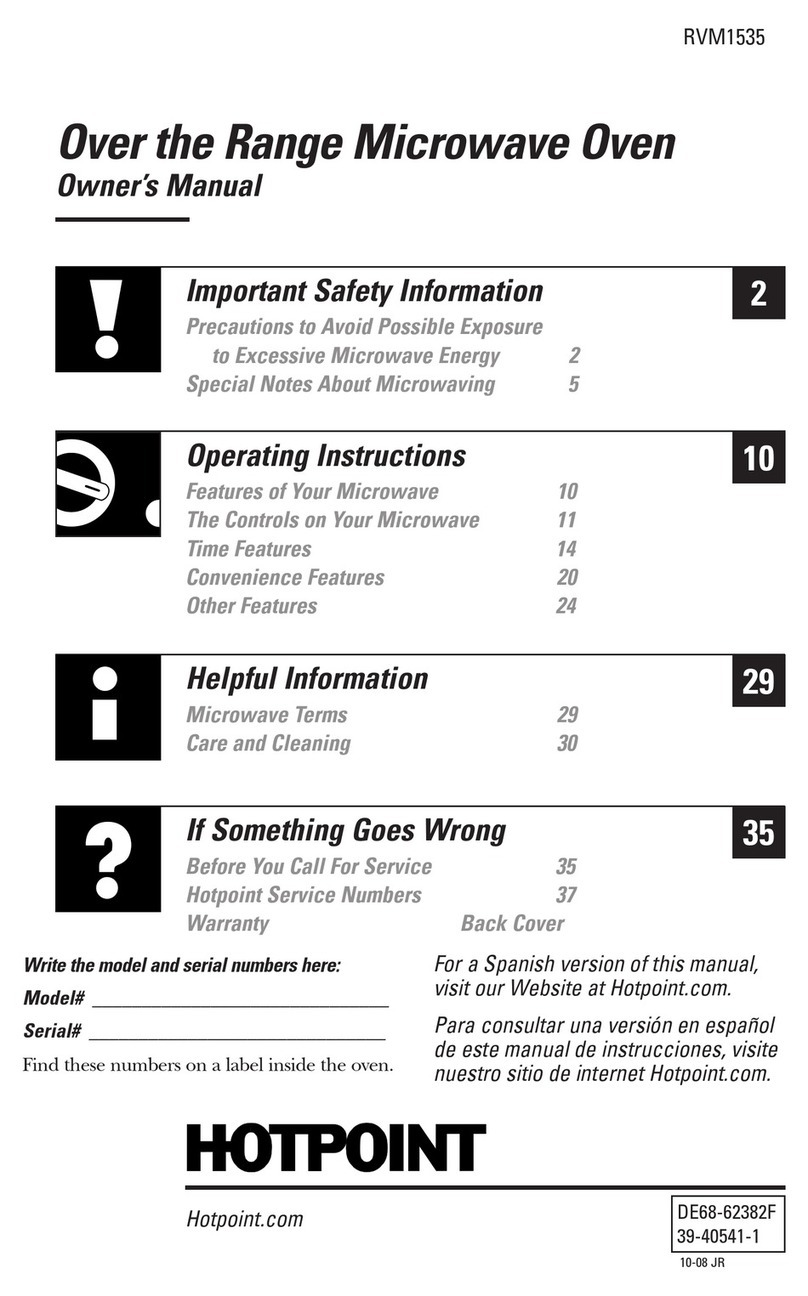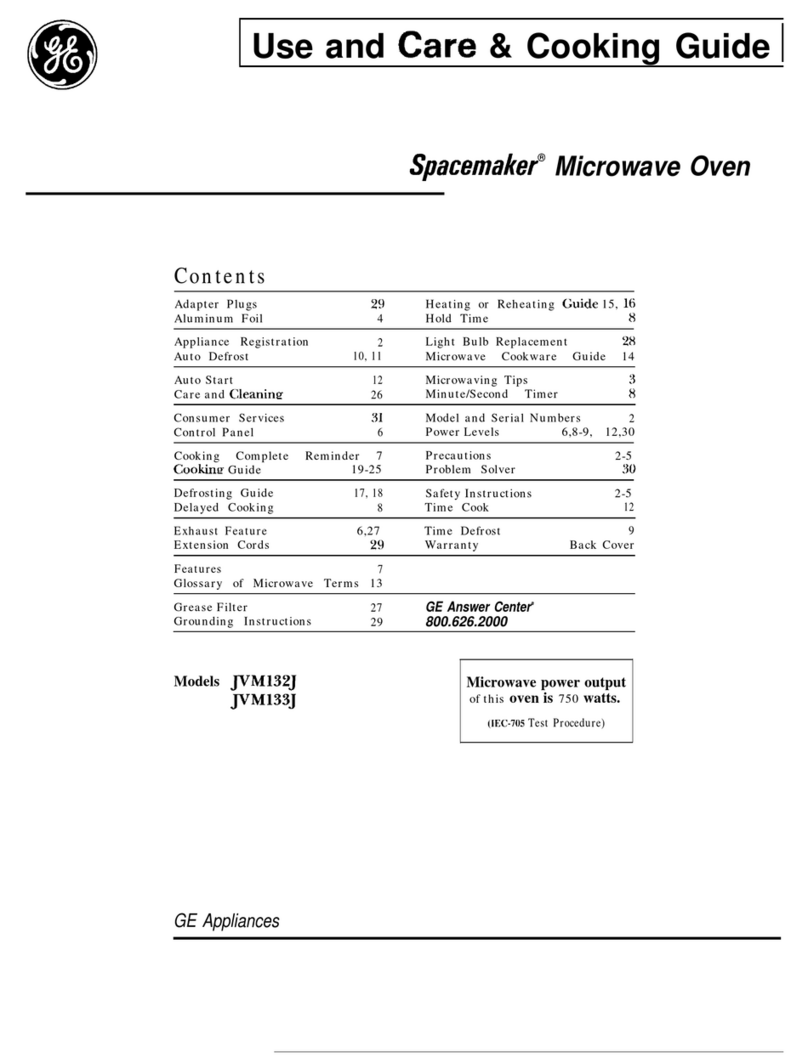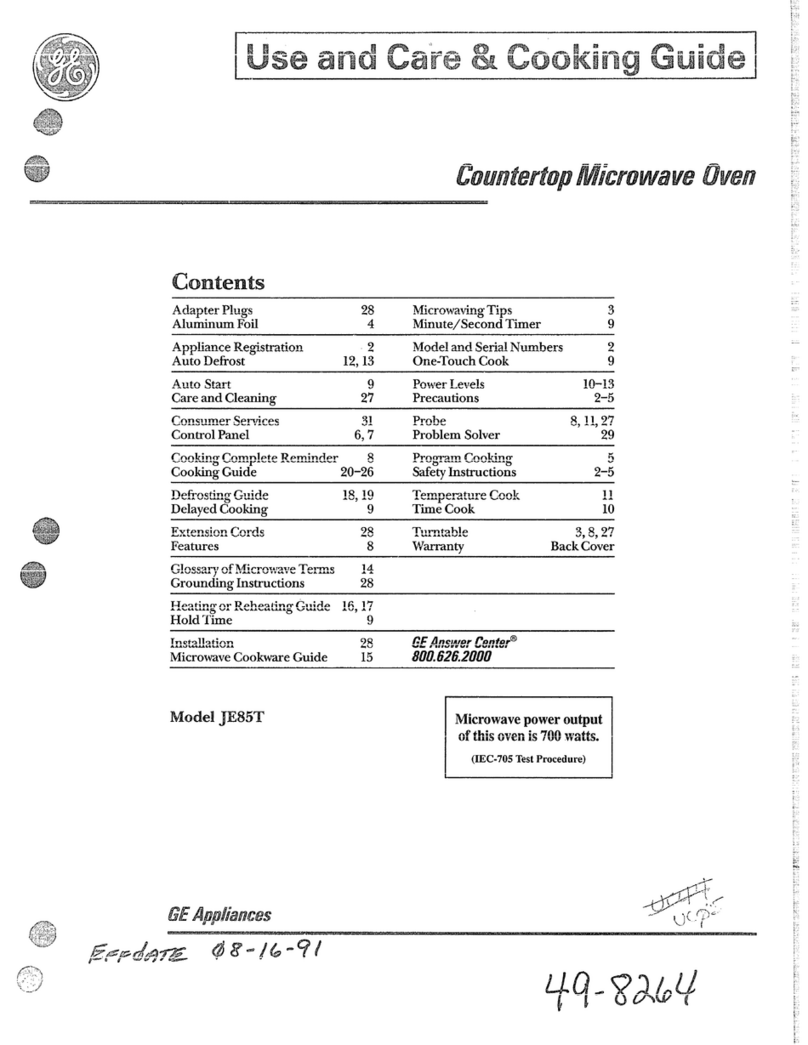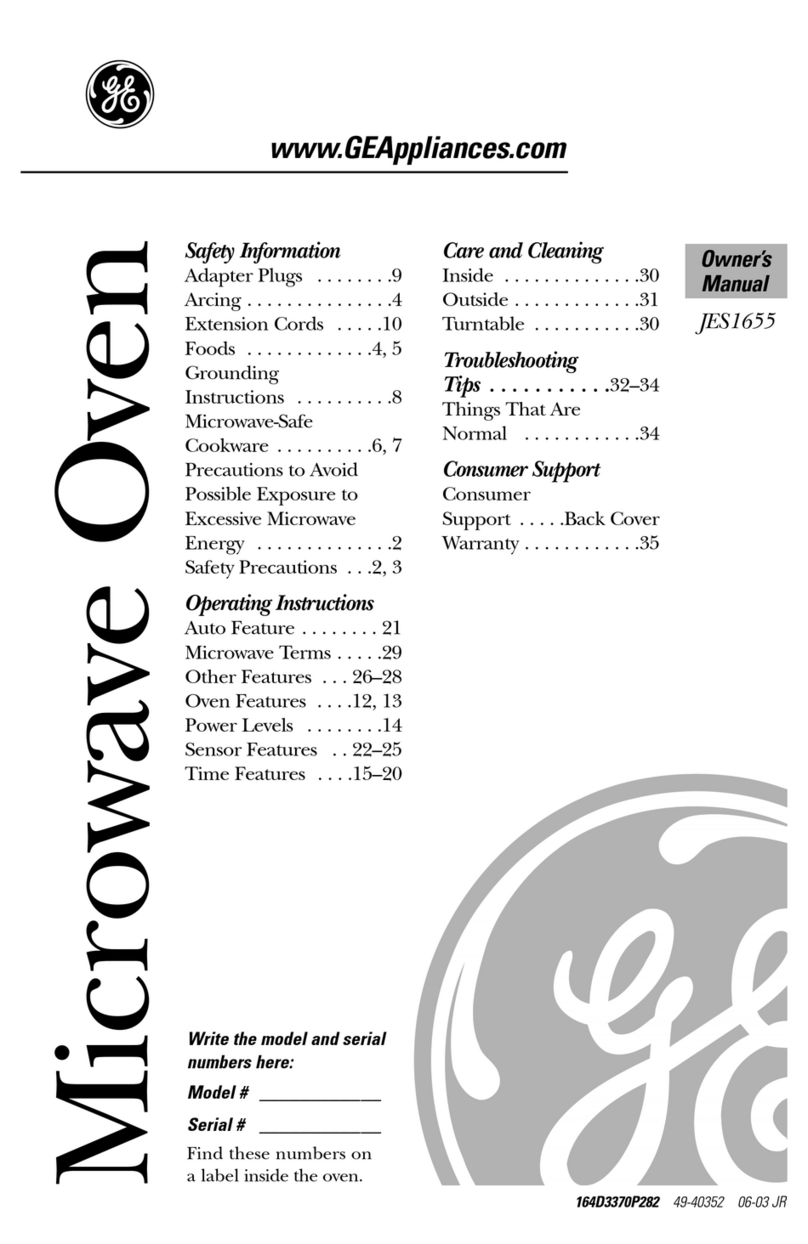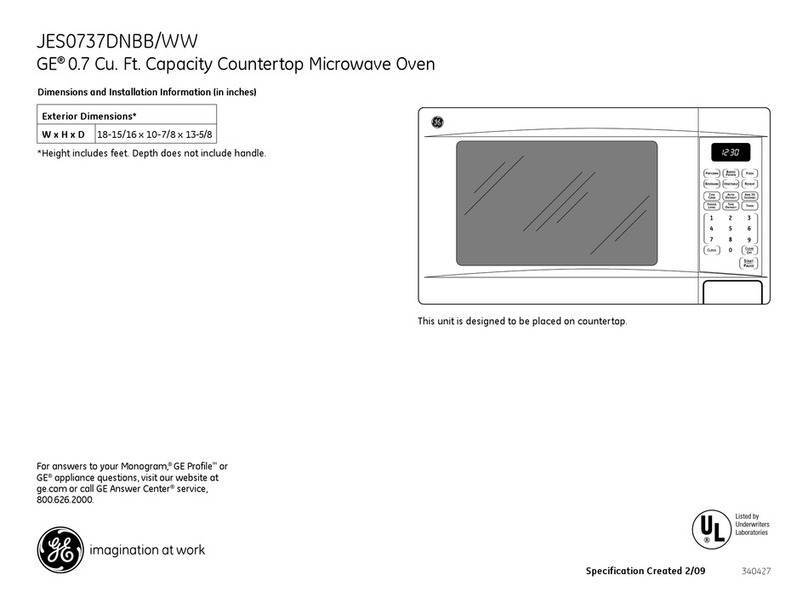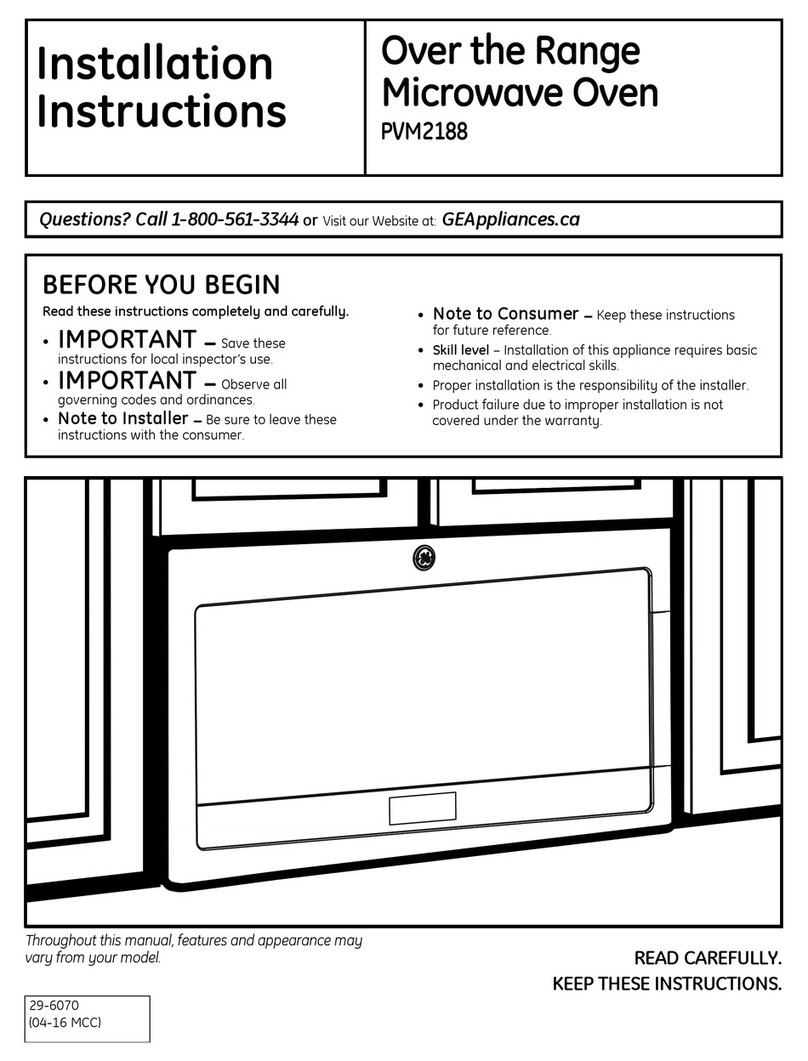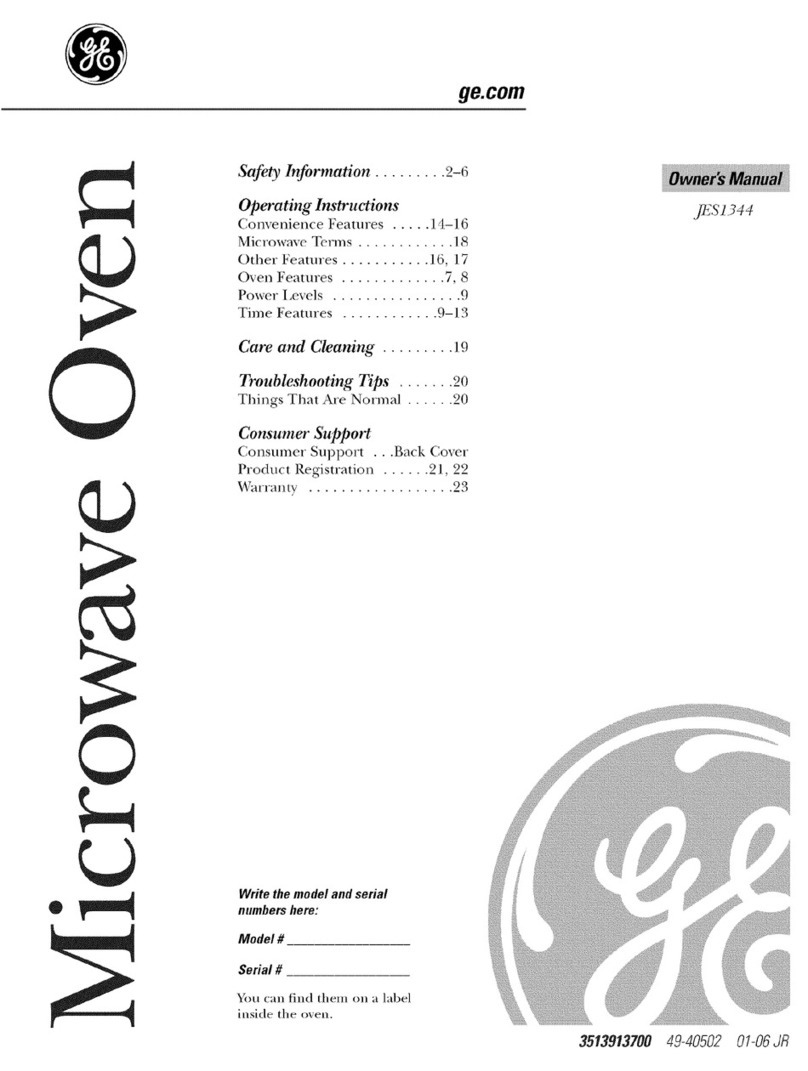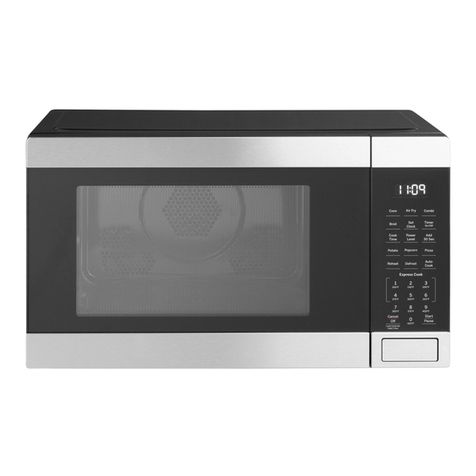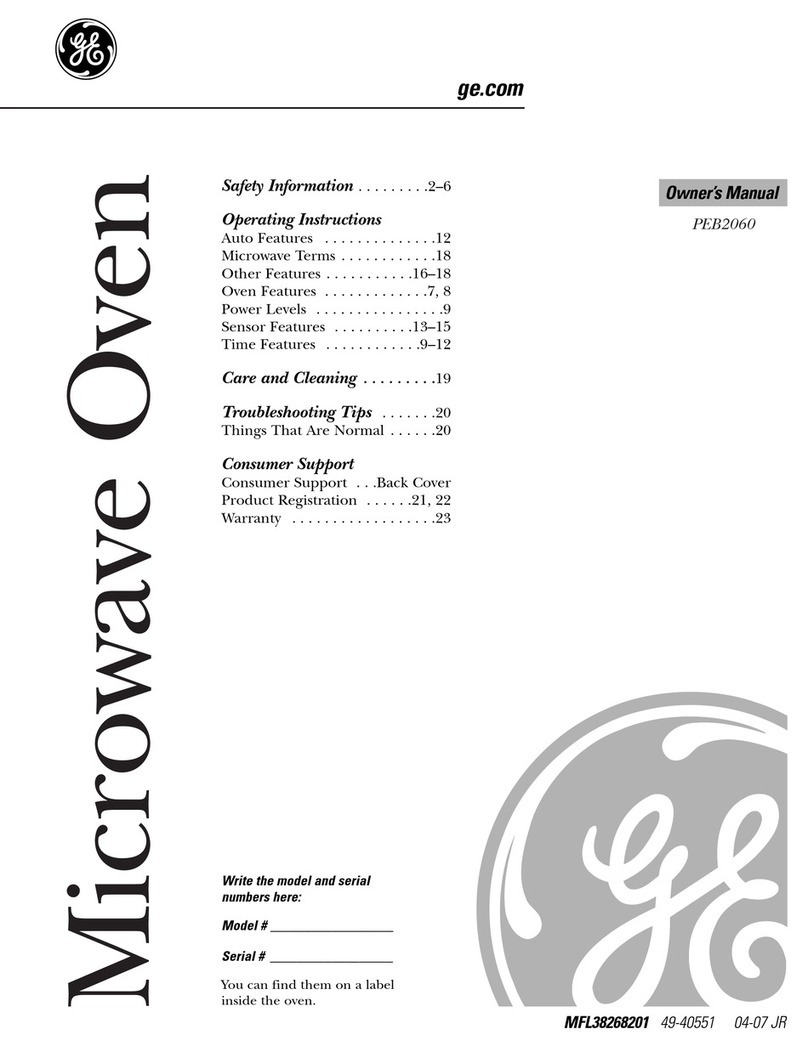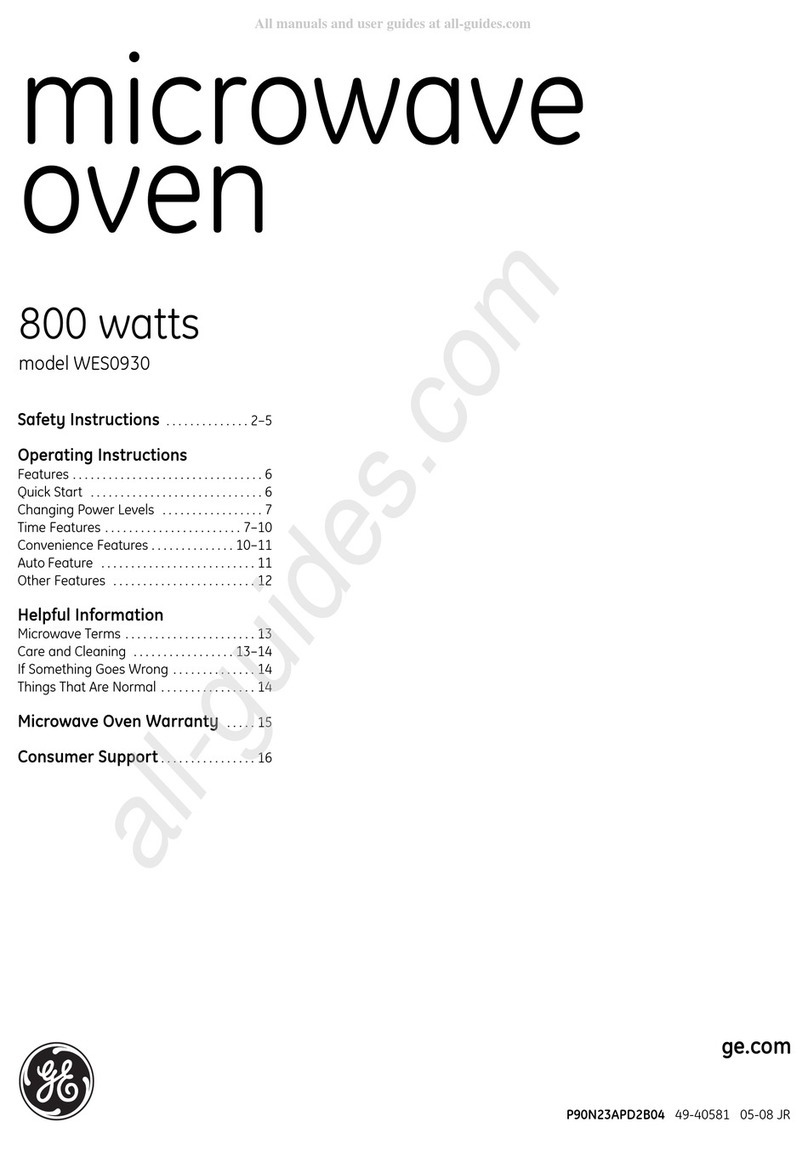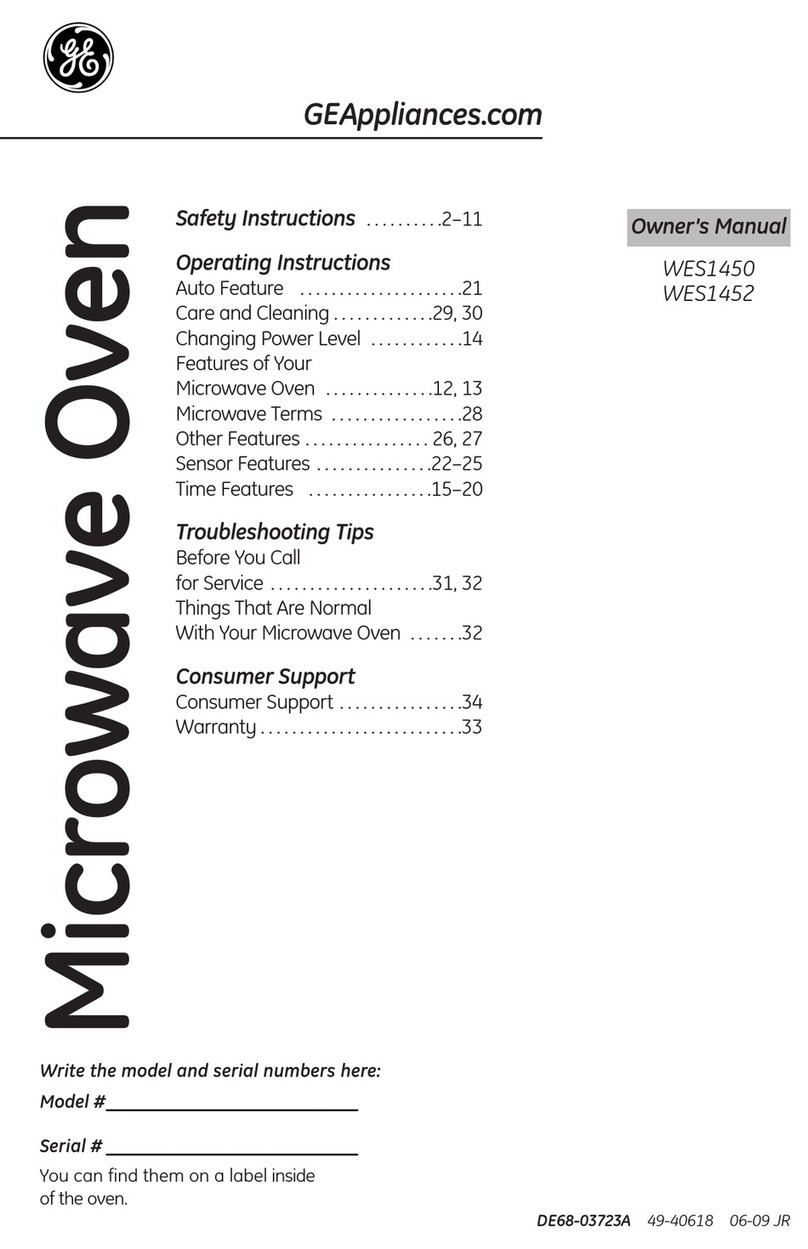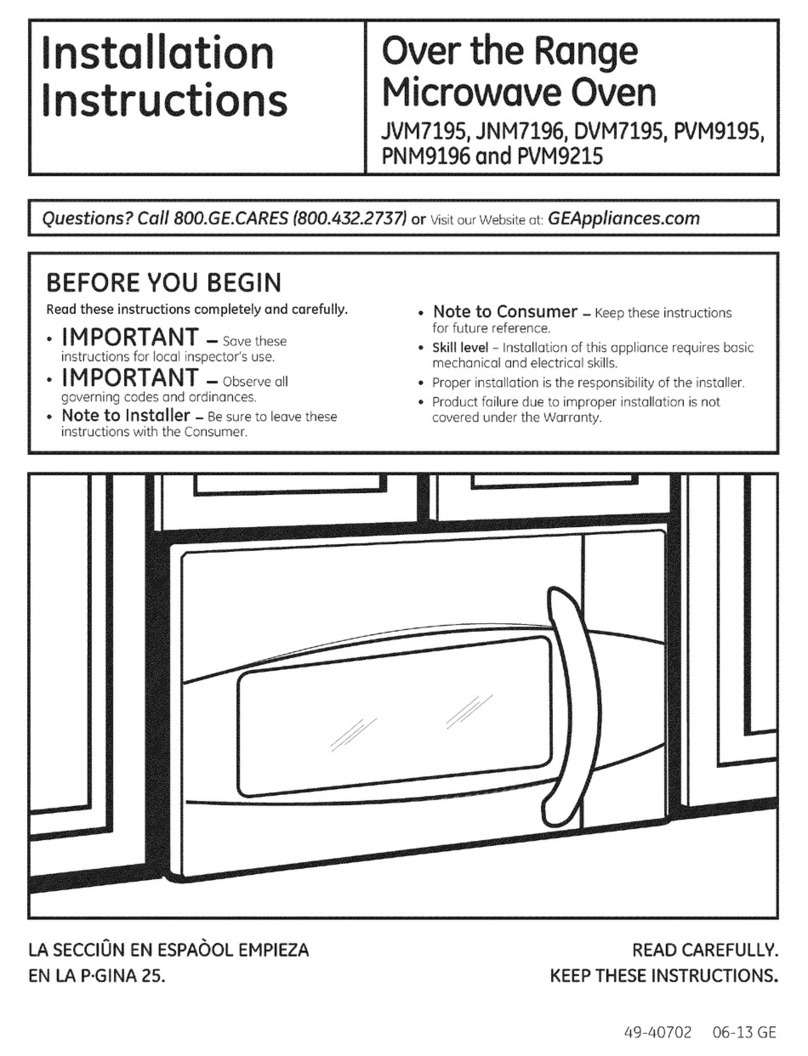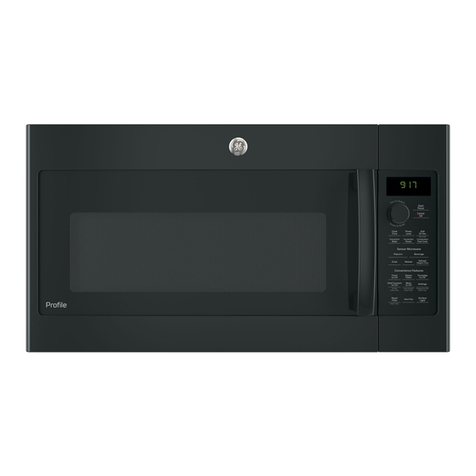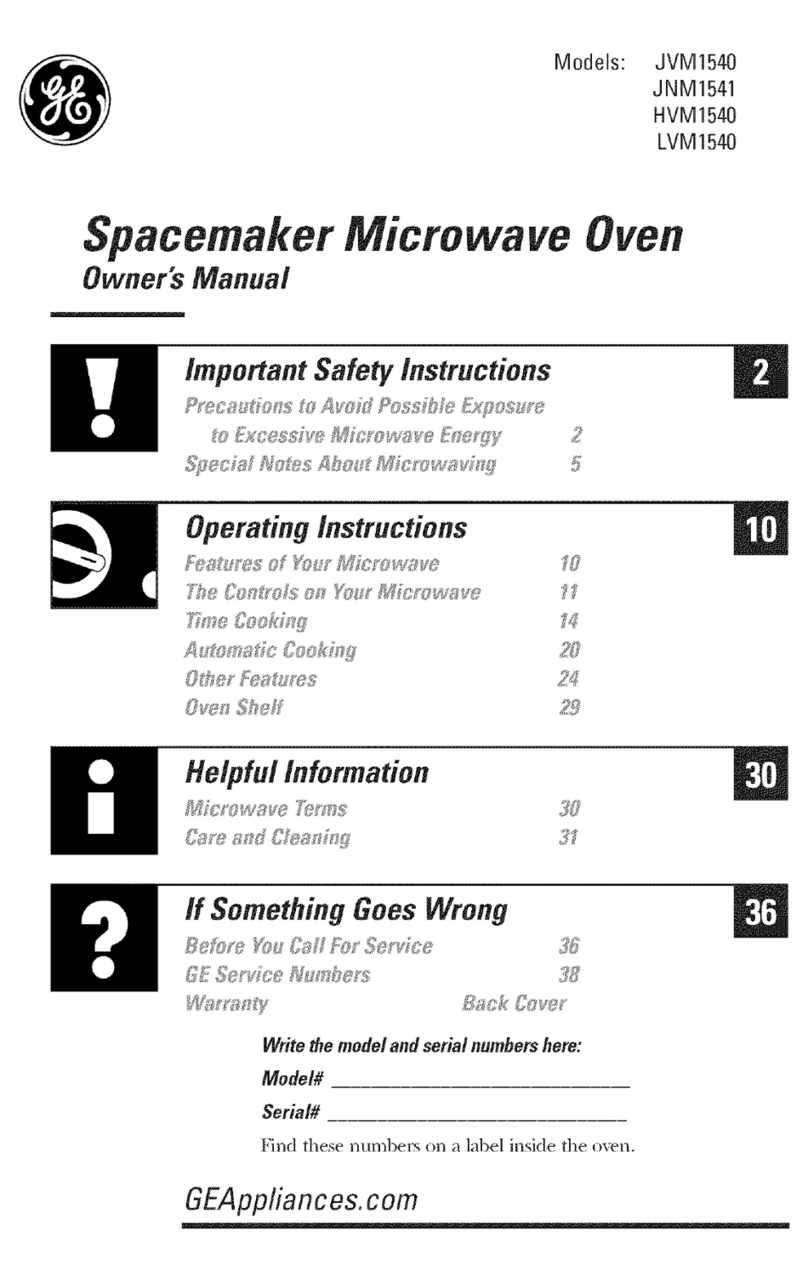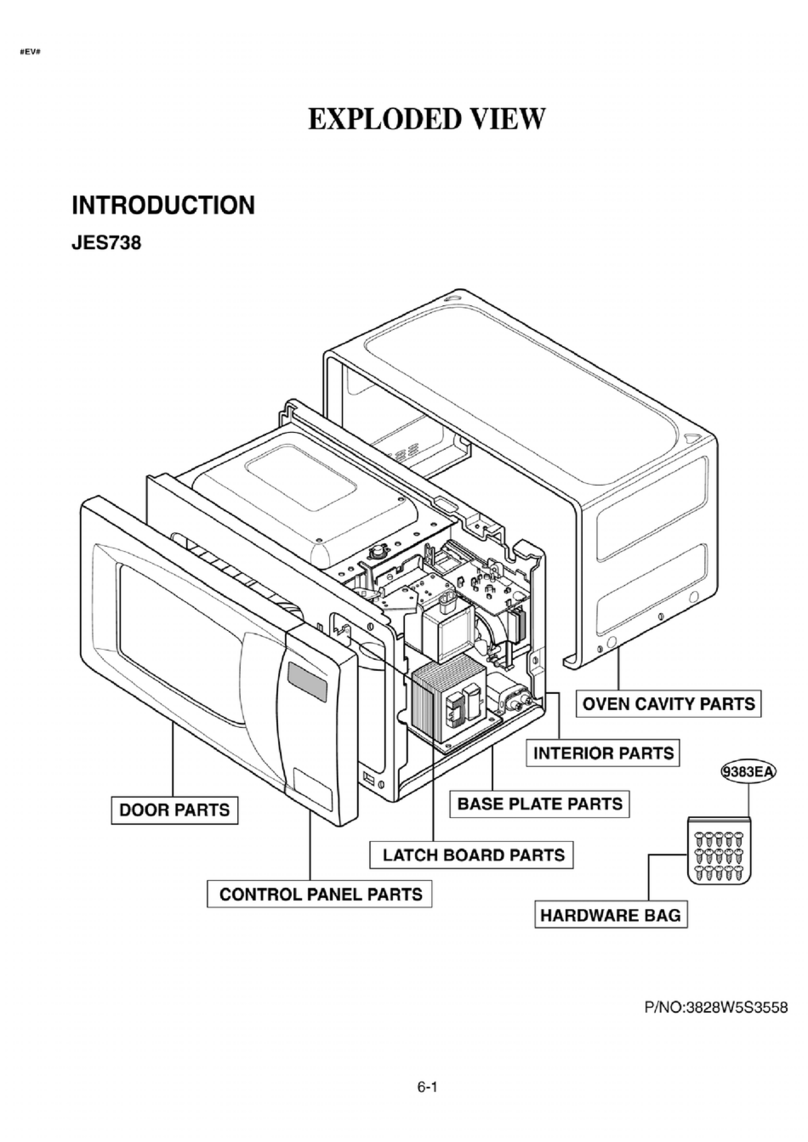IMPORTANT SAFETY
INSTRUCTIONS
(continued)
●
Avoid heating baby food in
glass jars, even without their lids;
especially meat and egg mixtures.
●
Don’t defrost frozen
beverages in narrow necked
bottles (especially carbonated
beverages). Even if the container
is opened, pressure can build up.
This can cause the container to
burst, possibly resulting in injury.
. Use metal only as directed in
this book. TV dinners maybe
microwaved in foil trays less than
3/4” high; remove top foil cover
and return tray to box. When
using metal in the microwave
oven, keep metal at least 1 inch
away from sides of oven.
●
Cookware may become hot
because of heat transferred from
the heated food. Pot holders may
be needed to handle the cookware.
. Sometimes, the oven tray can
become too hot to touch. Be
careful touching the tray during
and after cooking.
●
Foods cooked in liquids
(such as pasta) may tend to
boil over more rapidly than
foods containing less moisture.
Should this occur, refer to the
Care and Cleaning section(s)
for instructions on how to clean
the inside of the oven.
●
Thermometer—Do not use a
thermometer in food you are
microwaving unless the
thermometer is designed or
recommended for use in the
microwave oven.
●
Plastic cookware—Plastic
cookware designed for
microwave cooking is very
useful, but should be used
carefully. Even microwave-safe
plastic may not be as tolerant of
overcooking conditions as are
glass or ceramic materials and
may soften or char if subjected to
short periods of overcooking, In
longer exposures to overcooking,
the food and cookware could
ignite. For these reasons:
1
) Use
microwave-safe plastics only and
use them in strict compliance with
the cookware manufacturer’s
recommendations. 2) Do not
subject empty cookware to
microwaving. 3) Do not permit
children to use plastic cookware
without complete supervision.
●
When cooking pork, follow
the directions exactly and always
cook the meat to an internal
temperature of at
least
170°F,
This assures that, in the remote
possibility that trichina may be
present in the meat, it
will
be
killed
and meat
will
be safe to eat.
●
Do not boil eggs in a
microwave oven. Pressure will
build up inside egg yolk and will
cause it to burst, possibly
resulting in injury.
●
Foods with unbroken outer
“skin” such as potatoes, sausages,
tomatoes, apples, chicken livers
and other giblets, and egg
yolks
(see previous caution) should be
pierced to allow steam to escape
during cooking.
●
Not all plastic wrap is suitable
for use in microwave ovens.
Check the package for proper use.
●
Spontaneous boiling—Under
certain special circumstances,
liquids may start to boil during or
shortly after removal from the
microwave oven. To prevent
burns from splashing liquid, stir
the liquid briefly before
removing the container from the
microwave oven.
●
~~Boilable”
cooking pouches
and tightly closed plastic bags
should be slit, pierced or vented
as directed on package. If they
are not, plastic could burst during
or immediately after cooking,
possibly resulting in injury. Also,
plastic storage containers should
beat least partially uncovered
because they form a tight seal.
When cooking with containers
tightly covered with plastic wrap,
remove covering carefully and
direct steam away from hands
and face.
●
Hot foods and steam can
cause burns. Be careful when
opening any containers of hot
food, including popcorn bags,
cooking pouches and boxes. To
prevent possible injury, direct
steam away from hands and face.
SAVE THESE
INSTRUCTIONS
Optional Accessories
Optional accessories are available
at extra cost from your GE supplier.
JX18K Installation Kit converts
this oven to a built-in wall oven.
JX19K Installation Kit for
30” installations.
